Marine experts say jellyfish are misunderstood. We should appreciate their beauty and help count them – but just don’t touch!
Every year swimmers off the Purbeck coast report sightings and just occasionally someone gets stung but on the whole marine conservationists say the extraordinary creatures offer no real danger.
Julie Hatcher, marine awareness officer, at the Wild Seas Centre in Kimmeridge, run by Dorset Wildlife Trust, says summer is the time of year when we spot them off our coast.

The much-maligned jellyfish in all its beauty
“This is the time of year”
Julie said:
“This is the time of year when we see jellyfish, during the summer months, and sometimes they get washed up on the beach and obviously they die because they need to be in water.”
There are several types off the local coast – like the Blue Jellyfish, the Compass jellyfish, the Barrel jellyfish. The Barrel is the biggest variety, but they don’t sting – they feed on plankton.
She said:
“The exciting thing about having jellyfish in our water is that when there are jellyfish around there’s always the chance you might see something as amazing as the leatherback turtle.”
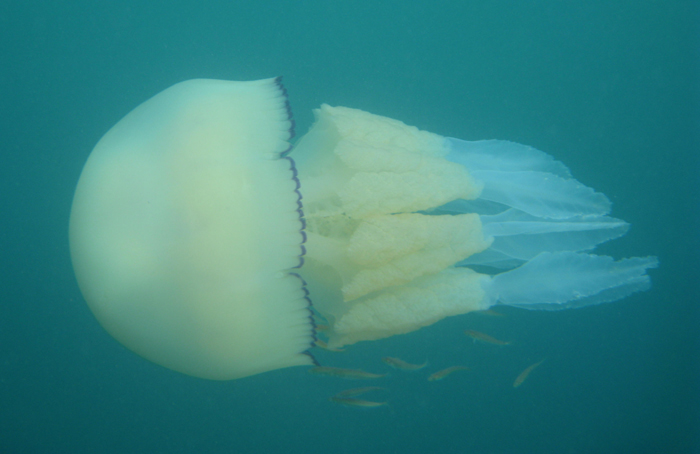
The Barrel Jellyfish with fish around its tentacles
“Painful if your skin is sensitive”
Occasionally, as at Lulworth Cove earlier in the summer, someone does get stung.
Julie said:
“It’s quite painful if your skin is sensitive but it won’t kill you. I’ve never heard of anyone dying from a jellyfish sting around here.”
The famous, and more dangerous, Portuguese Man of War is extremely rare in our waters and is technically not a jellyfish but a siphonophore – floating on the surface, whereas jellyfish are under the water.
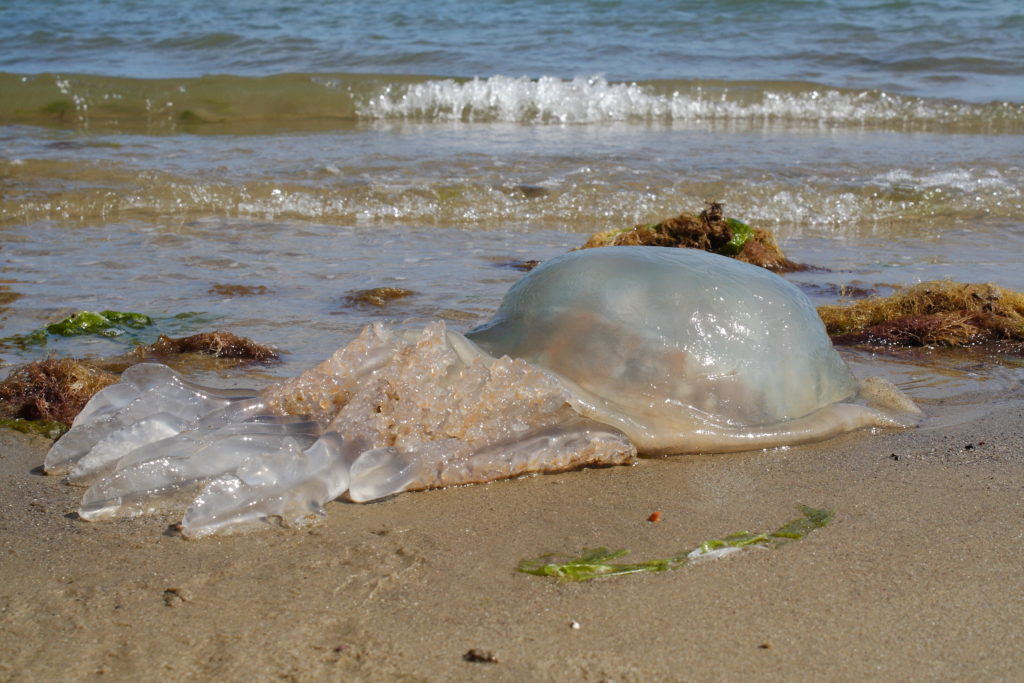
Virtually the only time people come across them is washed up on the shore
“Important role”
Julie urges:
“We need to see the positive side of them. They have an important role to play. They are food for other creatures in the marine food chain. And they are beautiful creatures, sometimes they have shoals of other fish around their tentacles. They are just stunning.”
But she adds:
“I would say: don’t touch them if you can avoid them, but I think people should appreciate that they are part of the animal world and we shouldn’t be so afraid of them. They are to be appreciated rather than feared. You hardly ever notice them until they wash up on the beach.”

The Wild Seas Centre at Kimmeridge
“Nothing to be scared of “
The Marine Conservation Society carries out an annual survey of jellyfish and asks people to log sightings with them.
A spokesperson said:
“We’re champions of jellyfish here at– as long as people look, don’t touch, then they’re nothing to be scared of. Our jellyfish sightings programme asks beachgoers to share the location of the jellyfish they’ve spotted, and what type it is, so that we can understand how they use the UK’s seas through the summer when they head in our direction.”
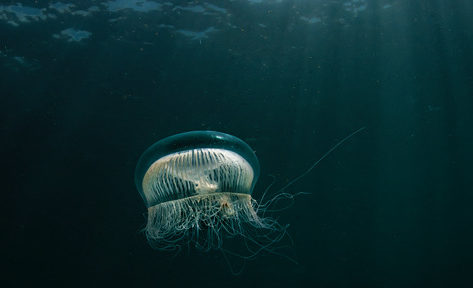
Swimmers are invited to report sightings
Guidance issued
The RNLI has issued the following guidance:
“If you are stung by a jellyfish, do not rub as this will cause the pain to increase. Lightly spray the area with sea water and apply a cold compress if available.
“If severe and or life-threatening symptoms are present, seek medical attention immediately. If you spot a jellyfish, do not touch it and report it to a lifeguard.”
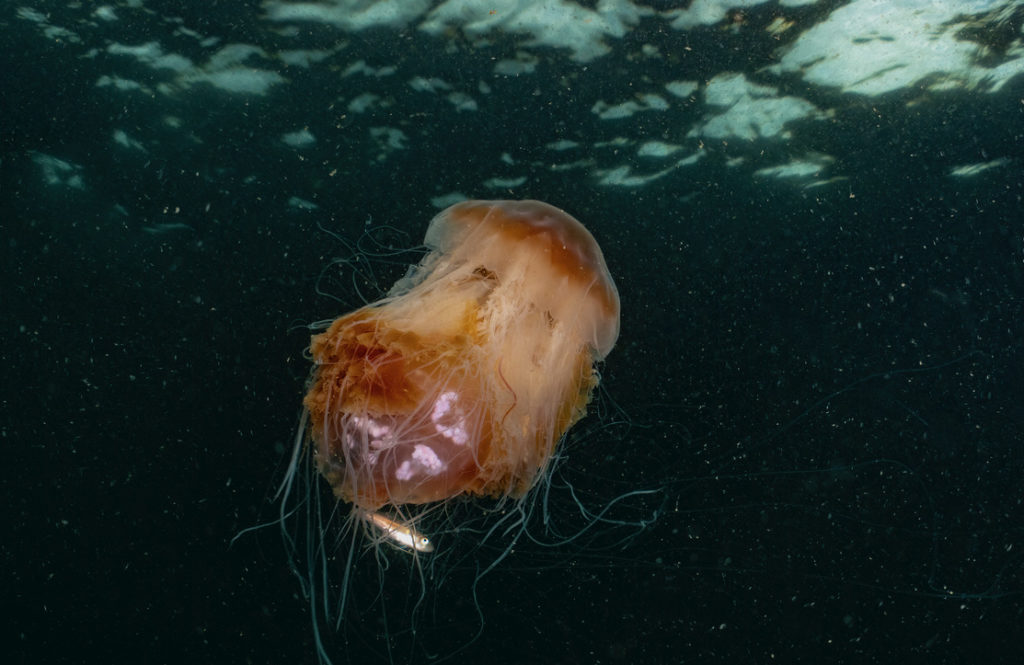
A Lion’s Mane Jellyfish with a Moon Jellyfish in its tentacles
“Jellyfish get the blame for sea anemones!”
Julie Hatcher said jellyfish can often be wrongly blamed for stings. There are weaver fish and sea anemones that are much more likely to cause problems.
She said:
“Lots of people think they have been stung by jellyfish but it’s sea anemones. They are attached to the seabed, and they can sting. So, it’s usually not jellyfish at all. The jellyfish get the blame for the sea anemones!”
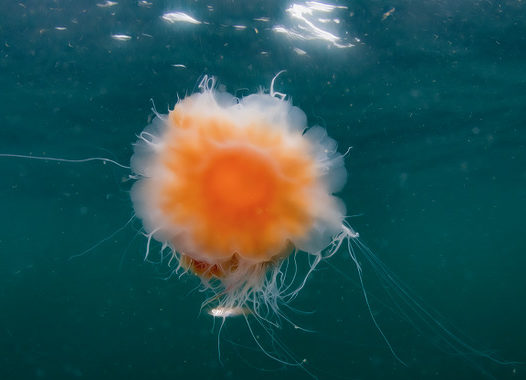
Jellyfish are frequent visitors to our shores in summer
Further information
- More about Dorset jellyfish is on the Dorset Wildlife Trust website





